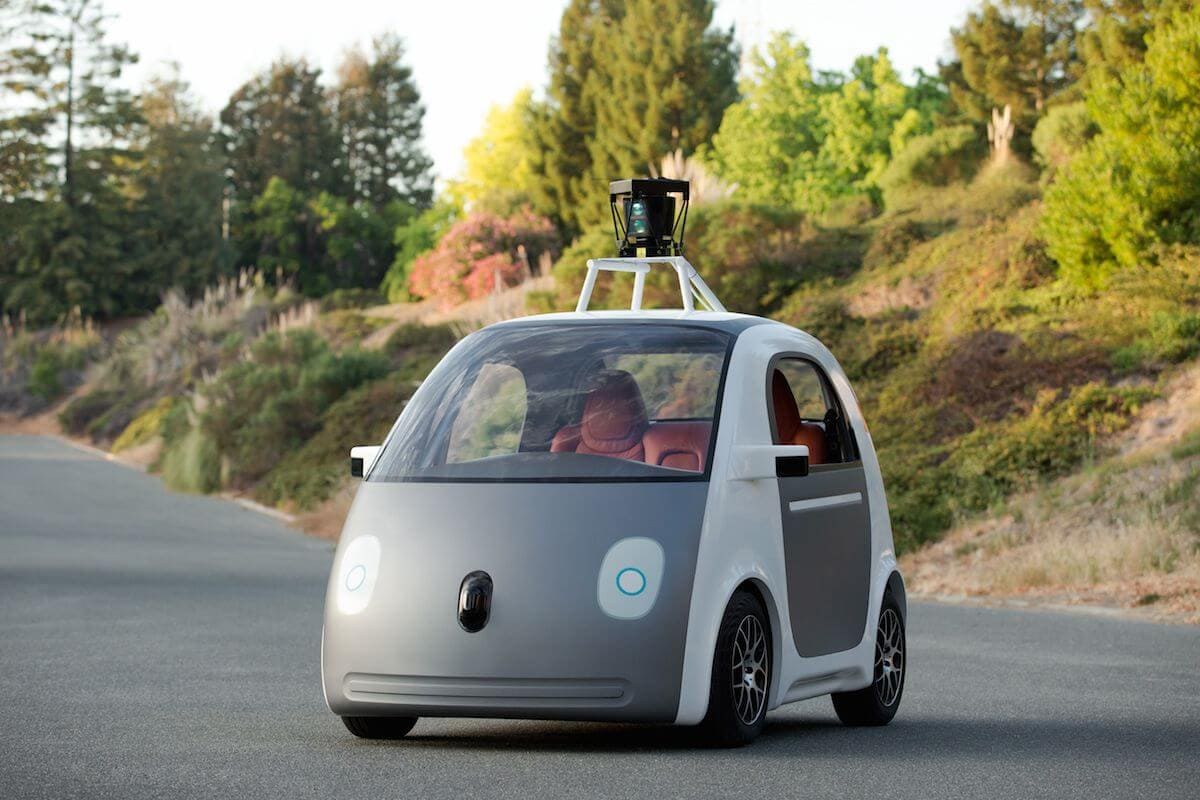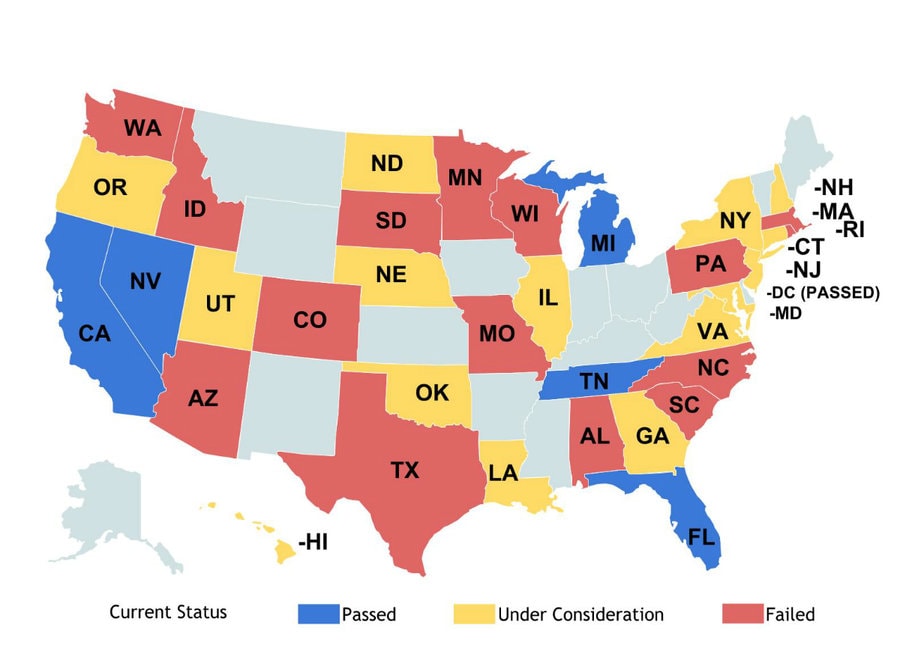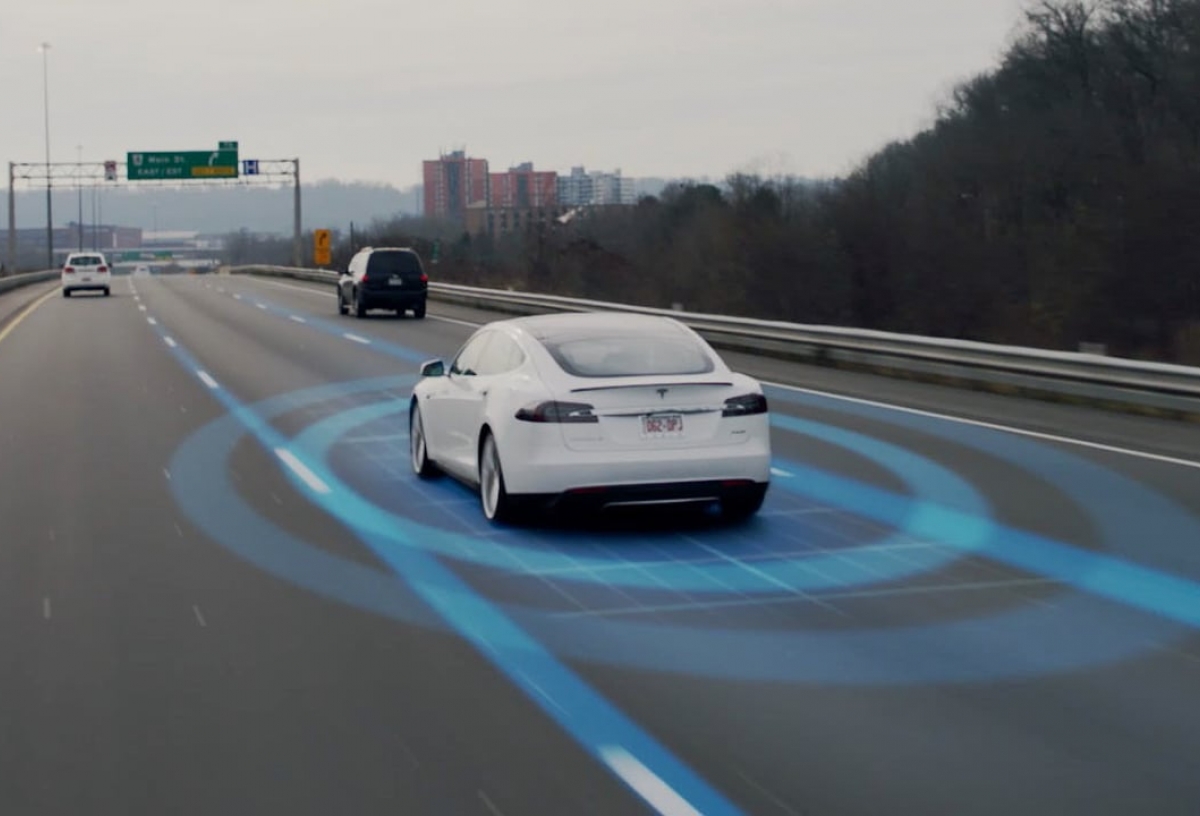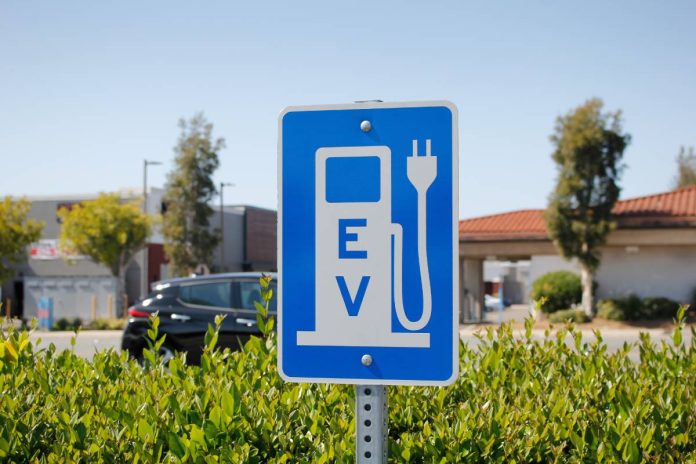By now, it’s clear that a future with mostly (if not all) self-driving cars on our roads is a matter of when, not if.
With Tesla’s renowned Autopilot feature, Google’s autonomous car, Uber’s self-driving fleet, and even a rumored Apple car, autonomous vehicles are about to become a mainstay of our culture.
But outside of the obvious benefits of driverless cars (e.g., watching Netflix while commuting), there are many other societal and environmental implications that make a driverless future exciting for environmentalists.
This article takes a look at all of the positive developments a driverless future will bring. But first, let’s look at exactly what a driverless car is.
What is a self-driving car?

Driverless cars also referred to as self-driving cars or autonomous cars, are vehicles that don’t require a person to manually control them.
You don’t need to have your hands on a steering wheel, and in some cases, there isn’t even a steering wheel to hold.
Driverless cars exist in a few different formats today, which range from fully autonomous driving (e.g., Google’s car) to driver-assisted technology that only requires the driver to control the vehicle some of the time (e.g., Tesla’s “Autopilot”).
In general, a driverless car’s computer system takes over all driving responsibilities. The vehicle’s system uses infrared radars, LIDAR (laser radar), as well as sophisticated motion sensors, cameras, incredibly accurate GPS, and complex algorithms that allow the car to drive itself.
Using all of this technology, along with historical data from logged hours, the car can generate a map of its surroundings to know where it’s going, what’s around it, and what areas to avoid.
The car can read road lights, traffic signs, and road markings and even monitor other vehicles, cyclists, and pedestrians.
The car drives by the rules of the roads, meaning speed limits are always adhered to, and obstacles and potential hazards are spotted much quicker, allowing for a safer halt with less braking and accelerating.
The environmental benefits of self-driving cars
Reduced Carbon Emissions
First of all, emissions.
Yes, most of the driverless vehicles being driven (and test-driven) today are already fully electric.
But even so, unless your car’s battery charge is powered entirely by clean energy, you’re still indirectly contributing to emissions (though not nearly as much as a gas engine).
Autonomous cars use significantly less gas and energy when driving compared to vehicles driven by a humans.
Most gas is burned when driving at high speeds, braking, and re-accelerating excessively.
Self-driving vehicles cut these factors out of their driving style, meaning less gas is burned or battery power consumed, resulting in less air pollution.

Driverless cars also mean fewer cars per household.
One vehicle can now drop the kids off at school, take both mom and dad to work, and then park itself until it’s time to pick them back up.
One driverless car can literally get you to all of the destinations you need, so families can cut back on having 2 or 3 different cars to fit the needs of each person.
This reduces the overall number of cars on the road, as well as unnecessary overlapping trips that contribute to emissions.
It’s also expected that, as driverless car technology is advanced, the weight of the cars will drop as a result of lighter batteries and less need for heavy safety modifications to the engine.
This will also have a positive effect on gas/energy consumption.
Improved Traffic Flow & Parking
Forget the honking and gridlock – imagine city streets flowing smoothly, like a ballet of self-driving cars seamlessly collaborating. This isn’t science fiction; it’s the potential future promised by autonomous vehicles.
These smart cars, equipped with real-time traffic data, are the conductors of this new movement. They communicate, adjust speeds, and choose optimal routes, eliminating the stop-and-go chaos that plagues cities. This synchronized dance significantly reduces wasted fuel and emissions, improving air quality and contributing to a healthier planet.
But the green benefits extend beyond the exhaust pipe. The urban parking nightmare gets a tech makeover. Self-driving cars can search for and navigate to available spots with precision, eliminating the frustrating search that spews fumes and eats up precious space. Imagine that freed-up asphalt transformed into parks, green spaces, and vibrant street life, reclaiming the city.
This orchestrated traffic flow is not just about cleaner air; it’s about boosting our lives. Reduced congestion means shorter commutes, freeing up time and boosting productivity. Lower healthcare costs from improved air quality benefit everyone.
While still in their early stages, self-driving cars offer a glimpse of a future where technology and sustainability harmonize.
Enhanced Public Transportation

Imagine closing the gap between your doorstep and the train station with a self-driving shuttle. This isn’t just a futuristic convenience; it’s a powerful tool for greener cities.
AVs can seamlessly integrate with public transport, offering first- and last-mile connections to buses, trains, or bike stations. This reduces reliance on single-occupancy vehicles, the primary culprit of urban air pollution and congestion.
More people choosing public transport translates to fewer cars on the road, leading to cleaner air, quieter streets, and a healthier environment for everyone. This interconnected network of “smart” vehicles, seamlessly weaving into existing public transportation systems, holds the key to building sustainable, livable cities for the future.
Fewer Accidents
You know the saying, guns don’t kill people, people kill people? It goes the same way for vehicles.
Cars don’t cause crashes; people cause crashes. Whether from reckless driving, human error, texting, drinking, or just generally being distracted behind the wheel, human drivers are the most dangerous part of the driving experience.
In fact, Tesla’s safety data on its Autopilot feature usage convinced its CEO, Elon Musk, that it would have been irresponsible of the company to withhold the feature from a public release, given how much safer Autopilot was compared to a human driver.
It may be difficult for a human to make a split-second decision to veer right or left when a collision is imminent, but for a computer that has run thousands of simulations (or has a collective driving experience of hundreds of thousands of similar incidents), the safest path can be chosen instantly, avoiding any collision.
As an example, in the video below, a Tesla Model S on Autopilot safely avoids a truck merging into its lane that the human driver hadn’t even noticed:
The increased safety of autonomous vehicles will save countless human lives – whether in cars, on bike, or on foot – as well as animals that have found themselves in someone’s headlights.
The Legislation
While the technology seems a little too good to be true in terms of potential benefits and added safety, the government still has concerns when it comes to autonomous cars.
As it currently stands, driverless cars are legal in California, Nevada, Michigan, Tennessee, and Florida, with many more under consideration.

Discussion is still underway in many of the remaining states on whether driverless cars should be authorized, and we will likely see more activity on these in the coming months.
In Conclusion
Driverless cars are undoubtedly a boon for the planet. Not only will they help curb emissions, reduce fatalities of humans and wildlife, and allow city planners to focus on green space more than roads, but they’ll also give every commuter more time in their days.
For more information on driverless cars, visit our sister site, The Auto Future.












Thanks for the information. Great article with useful content regarding The Environmental Benefits of Driverless Cars. Wish To See More in the coming days.
The driverless car is an amazing invention that will help to reduce pollution and save lives. The environmental benefits of driverless cars are many and varied, and I’m sure we will see more and more of them in the years to come.